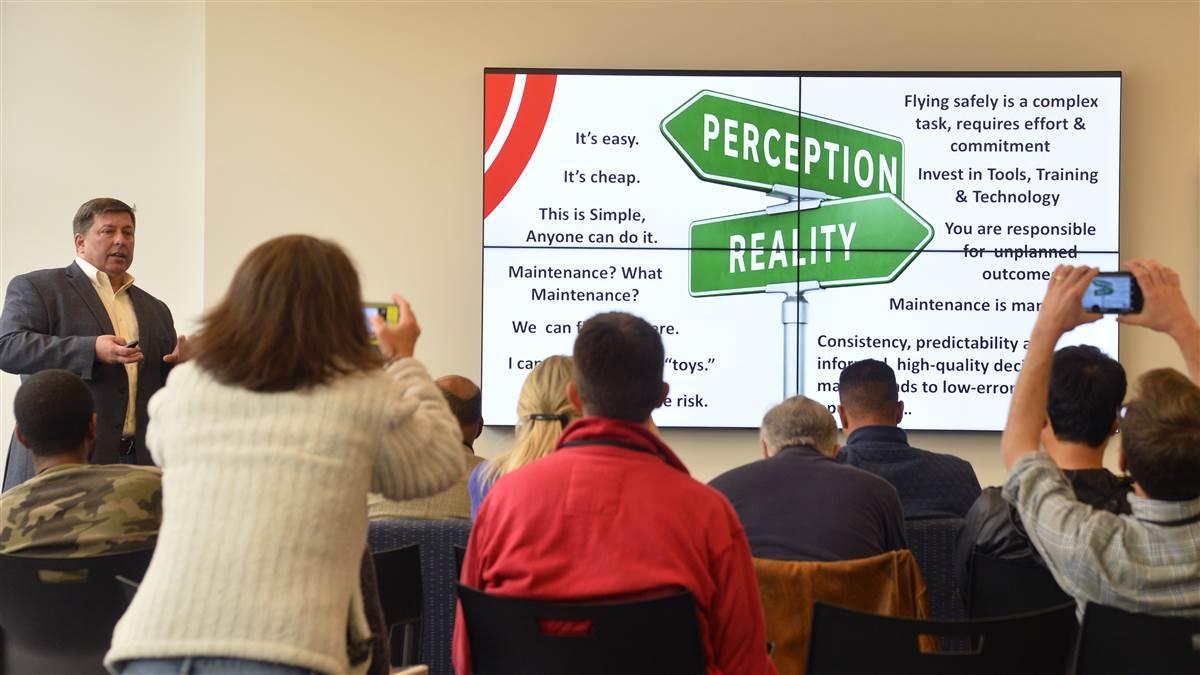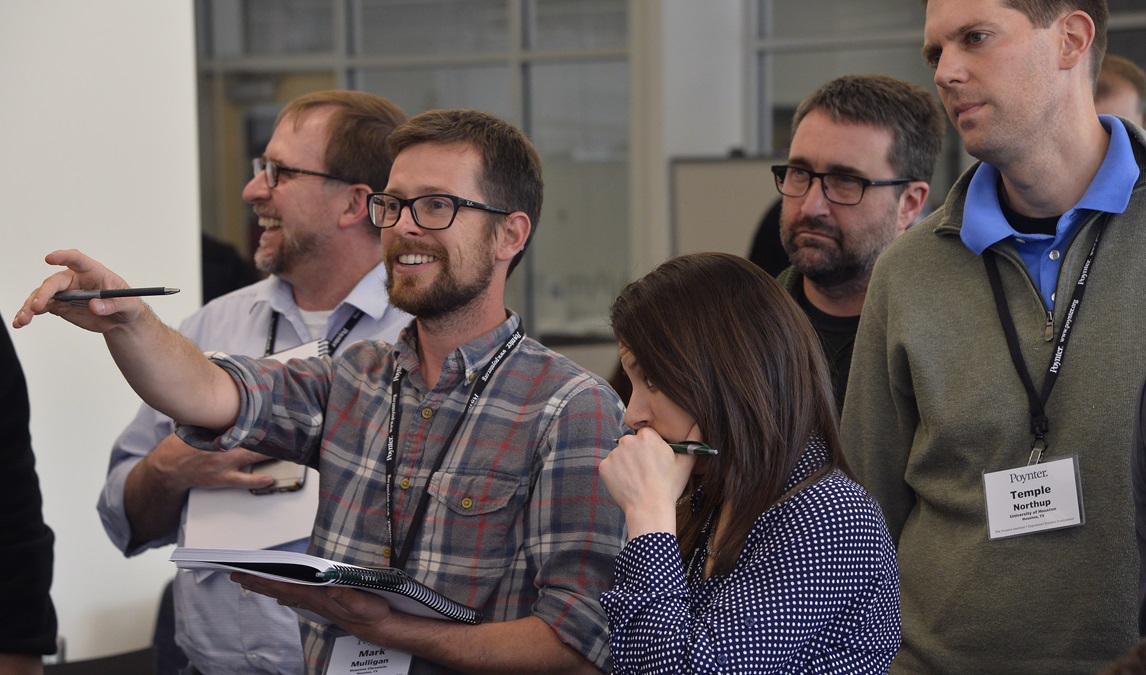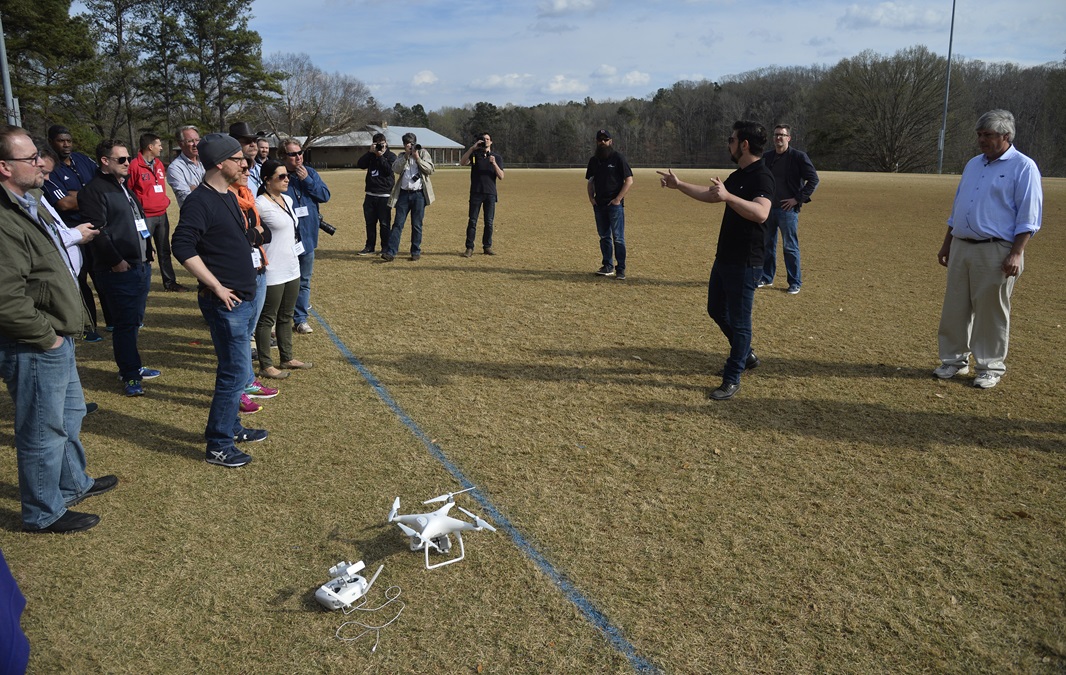Drone journalism students learn aviation basics, ethics
Inaugural program launches new pilots
A series of drone journalism seminars held in four U.S. locations launched almost 100 reporters into the world of aviation. They were nurtured by teachers who explained the latest technology and best practices during ground school and actual flying sessions in classes that spanned the spring, summer, and fall.
“We didn’t enter into this hoping people would be drone pilots,” explained the program’s co-founder Al Tompkins, an award-winning journalist and the author of the college textbook Aim for the Heart. “But if they choose to become drone pilots, we wanted them to be more thoughtful, careful pilots.” Tompkins is a senior faculty member at The Poynter Institute, a respected resource for journalists.

University of Nebraska-Lincoln professor and drone enthusiast Matt Waite led students through the aviation mine fields while National Press Photographers Association legal counsel Mickey Osterreicher coached them on ethics and privacy considerations.
Tompkins and Waite took turns capturing the students’ attention with practical applications while emphasizing FAA regulations and drone safety. Breakout sessions tested the students' recently acquired map-reading skills and quizzed their airspace knowledge. Waite developed—and shared—a step-by-step checklist that guided potential drone pilots through procedures that stressed good pilotage and decision-making skills. He also helped students understand the importance of crew resource management. Safety before, during, and after a flight was continually emphasized to the students.
A key consideration for the journalists was balancing privacy issues versus the public’s right to know so Tompkins illustrated the point with the United States v. Causby World War II legal case.
He raised concerns about the FAA’s role regulating the National Airspace System in the quickly changing environment that is now shared by manned and unmanned pilots alike. “We don’t seem to be getting a clear picture of what the FAA intends to do with the airspace,” Tompkins told AOPA by telephone. He feared “it would become untenable” if local authorities took over airspace regulation in certain areas.

Greg Agvent, the CNN AIR drone director for the Atlanta-based news network, mapped out how drone photography could benefit other newsrooms across the United States. He explained that CNN evaluated each news situation for potential risks and benefits before it considered drone photography options. Agvent explained that if the aerial technology didn’t lead to a better understanding for viewers, then the use of a drone for aerial imagery was rejected. If it was a “go,” tactical, logistical, and safety concerns were discussed with editors, reporters, and the drone crew before they were dispatched to a news event.
Before the weekend drone journalism seminars concluded, students put their book knowledge to the test by practicing simple aeronautical maneuvers during hands-on flying sessions courtesy of drone manufacturer DJI and retailer Drone Nerds.
Drone videography and photography from the spate of hurricanes that plagued the U.S. mainland and its territorial islands has proved the news medium’s worth, said Tompkins, whose own house was damaged by Hurricane Irma. A drone enabled him to very quickly assess the situation, a process that many insurance companies have also recently adopted.

“More and more industries are making extraordinarily good use of the technology, especially right after Hurricanes Harvey, Irma, and Maria,” added Tompkins, who noted that aerial footage was also used by some rescue agencies.
“It was incredibly powerful in Puerto Rico because it got you to places you can’t normally get to.” For example, the higher angle of view that drones provided emphasized the scope of the situation that residents faced as hundreds waited in lines snaking around neighborhoods to receive their rations of drinking water, food, medicine, or fuel.
“One of the things we are learning about drone photography is that when it’s used in context to give gravity to a situation, they tend to give us the whole picture,” added Tompkins. The seasoned journalist noted that there was a time and place for drone imagery, particularly in news reporting. He cautioned journalists to use the technology when appropriate but to avoid slow-motion drone videography accompanied by “savvy music” because it usually didn’t add much clarity to a developing news story.
“On the upside, we have some marvelous devices out there and there’s a lot of good that makes me believe that drone technology is very much in its infancy,” he noted.












